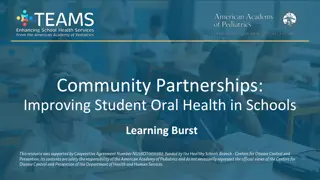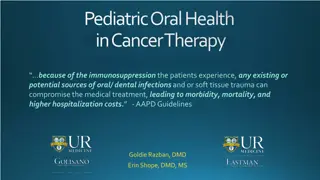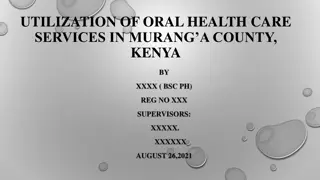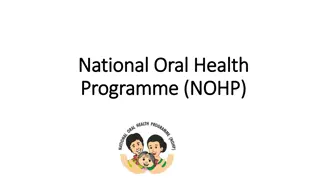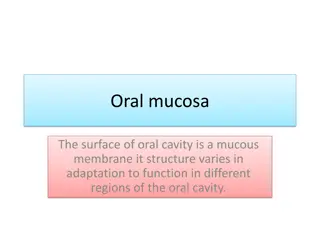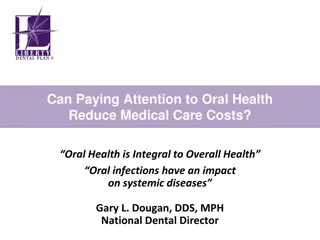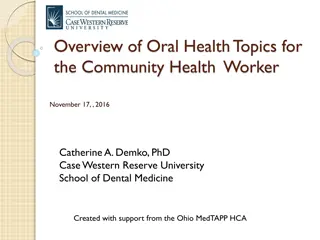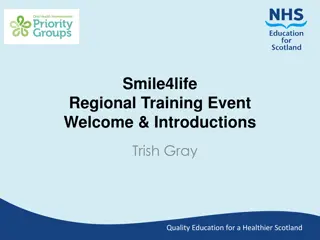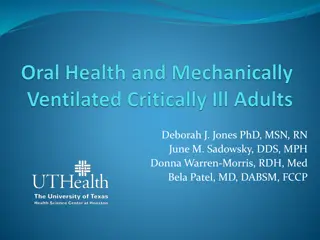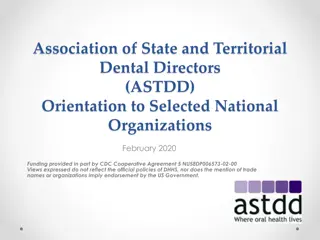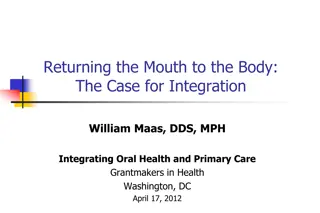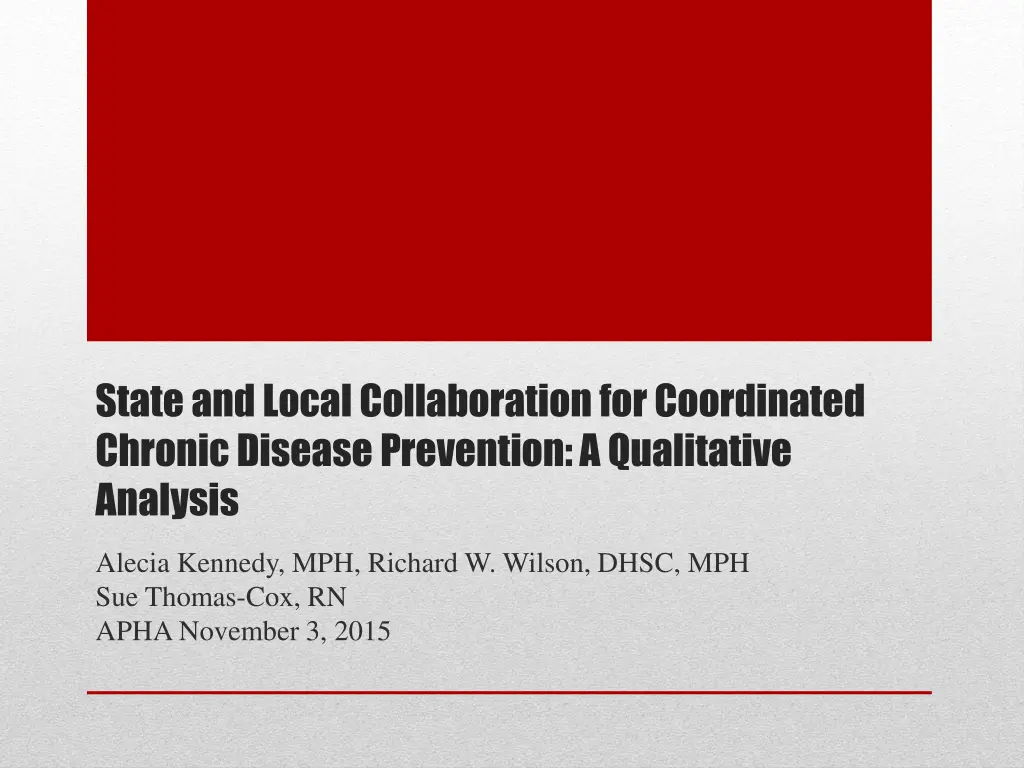
Local-State Collaboration for Chronic Disease Prevention: Qualitative Analysis
Explore the collaborative efforts between local health departments, community partners, and state categorical programs in coordinating chronic disease prevention. The study focuses on interview methodologies, benefits, and barriers of partnerships, and the role of different stakeholders in promoting public health.
Download Presentation

Please find below an Image/Link to download the presentation.
The content on the website is provided AS IS for your information and personal use only. It may not be sold, licensed, or shared on other websites without obtaining consent from the author. If you encounter any issues during the download, it is possible that the publisher has removed the file from their server.
You are allowed to download the files provided on this website for personal or commercial use, subject to the condition that they are used lawfully. All files are the property of their respective owners.
The content on the website is provided AS IS for your information and personal use only. It may not be sold, licensed, or shared on other websites without obtaining consent from the author.
E N D
Presentation Transcript
State and Local Collaboration for Coordinated Chronic Disease Prevention: A Qualitative Analysis Alecia Kennedy, MPH, Richard W. Wilson, DHSC, MPH Sue Thomas-Cox, RN APHA November 3, 2015
Presenter Disclosures Presenter Disclosures Alecia Kennedy, MPH (1) The following personal financial relationships with commercial interests relevant to this presentation existed during the past 12 months: No relationships to disclose
Coordinated Chronic Disease Prevention and Health Promotion Program (CCDP) Background
Nutrition and Obesity Healthy Communities Tobacco Control and Prevention Heart Disease and Stroke Colon Cancer Screening Breast and Cervical Cancer Bone and Joint KBRFSS Coordinated School Health Diabetes Respiratory Disease Kentucky s State Categorical Programs
Focus on current collaborative efforts Determine interview questions IRB approval Planning Private interviews Recorded, transcribed, analyzed Execution Dissemination of results to stakeholders Feedback used for revisions Accuracy Check Methodology
Local Health Departments (LHDs) Community Partners State Categorical Program Partners Differences in Partnerships Collaboration: Benefits and Barriers Interview Focus
State Local Health Departments Categorical Programs Community Partners Relationships
Point of Contact 22% Director Health Educator Supervisor Level Nurse/Case Manager All Other 33% 17% 11% 17% Local Health Departments
Majority of state programs worked with LHDs on a weekly basis Technical assistance and training were primary services Requirements for operation Benefits for state programs and LHDs Work Insights
Block grant funding for programs Grant-specific projects Non-financial assistance Funding
State Local Health Departments Categorical Programs Community Partners Relationships
University of Kentucky and the University of Louisville are the most common community partners Thirty-four different community partners identified Most community partners were engaged on a monthly basis Community Partners
Work on a common grant Community partner provides network introductions Provide professional development to partners Community partner provides advocacy assistance Community partner provides service Work Insights
Budget allocation to community coalitions Exchange training and materials for assistance in leading classes Grant-specific collaboration was common Federal money was a more common funding source than state money Funding
State Local Health Departments Categorical Programs Community Partners Relationships
Tobacco Control and Prevention =Most common partner Grant dependent Physical proximity Uneven staffing State Categorical Programs
Employee or data sharing Formal work on common grants or coalition work Informal work in the form of knowledge sharing Sharing information about other programs with contacts Work Insights
Unfunded collaboration Block Grant Uncertainty Funding
State Community Partners Categorical Programs Comparison of Partnerships
Primary Benefits Most Common Barriers Expand limited staff Stretch financial resources Learn about other programs Access additional funding Grant requirements and government restrictions Conflicting priorities Time constraints Themes
They might do strategic planning with us. They might do other kinds of work. They do things that are bigger picture activities than their local area Like I said, they re almost extensions of our staff that way. Referencing work with LHDs It s just one of me and I can t do it all They are my staff, so to speak, because I don t have staff to do those things with me. I don t know who half the people, the directors of these programs, are. I d love to meet them. Referencing community partnerships New Program Coordinator If it hadn t been for my partners being there to help me, I don t know what I would have done. Program Coordinator with no staff In their words
State programs already collaborate extensively with local health departments, other state programs and community partners There is great disparity between state programs in terms of staffing and intensity of collaboration Organizational structure for enhancing a more even approach to collaboration and staffing is lacking or perceived to be lacking by program coordinators Attitude toward increased collaboration is overwhelmingly positive if it is well-planned and managed Primary Findings
Establish cross-agency collaboration as a standard measure of sustainability for state government health programs New coordinator orientation should include stakeholder collaboration training New coordinator orientation should include an introduction to local health department organization and operation Where state programs provide funding to local and regional partners, make collaboration a stipulation Develop and incorporate evaluation and accountability measures of collaboration into periodic performance reports required by funders Recommendations

